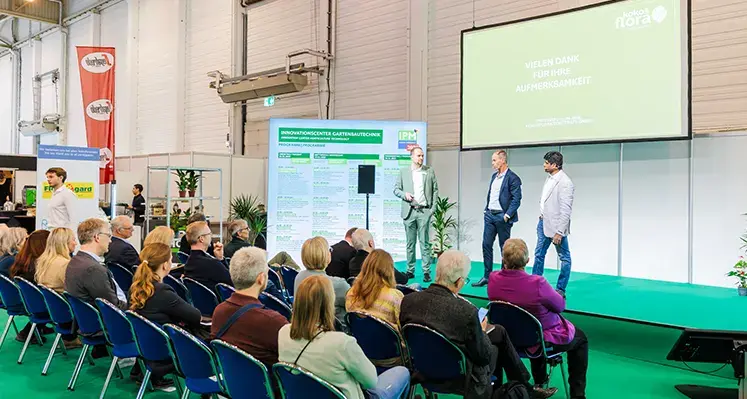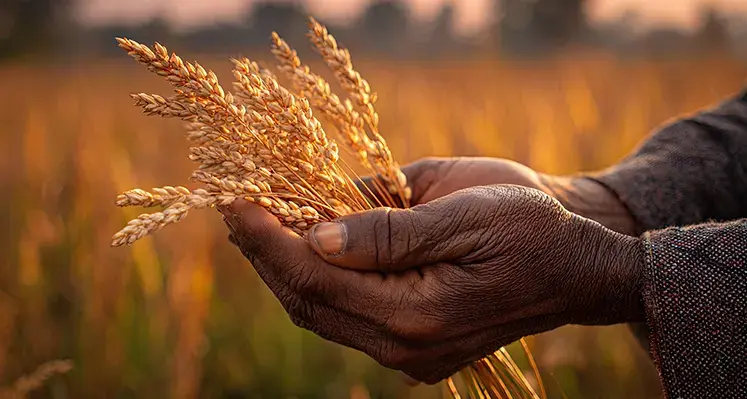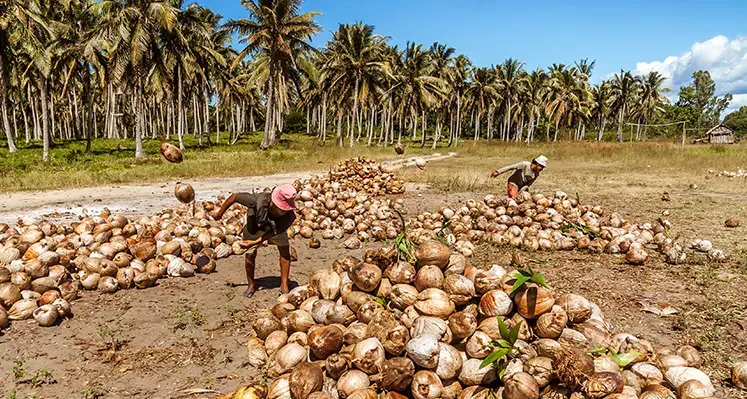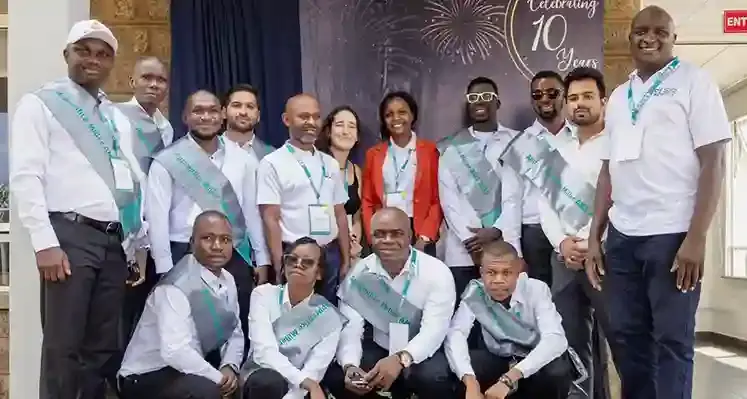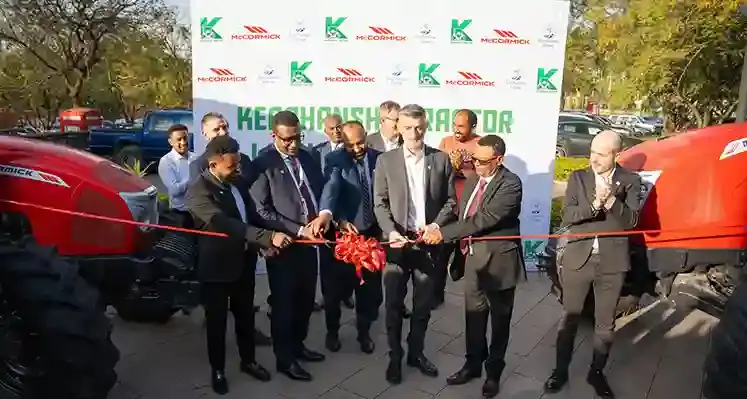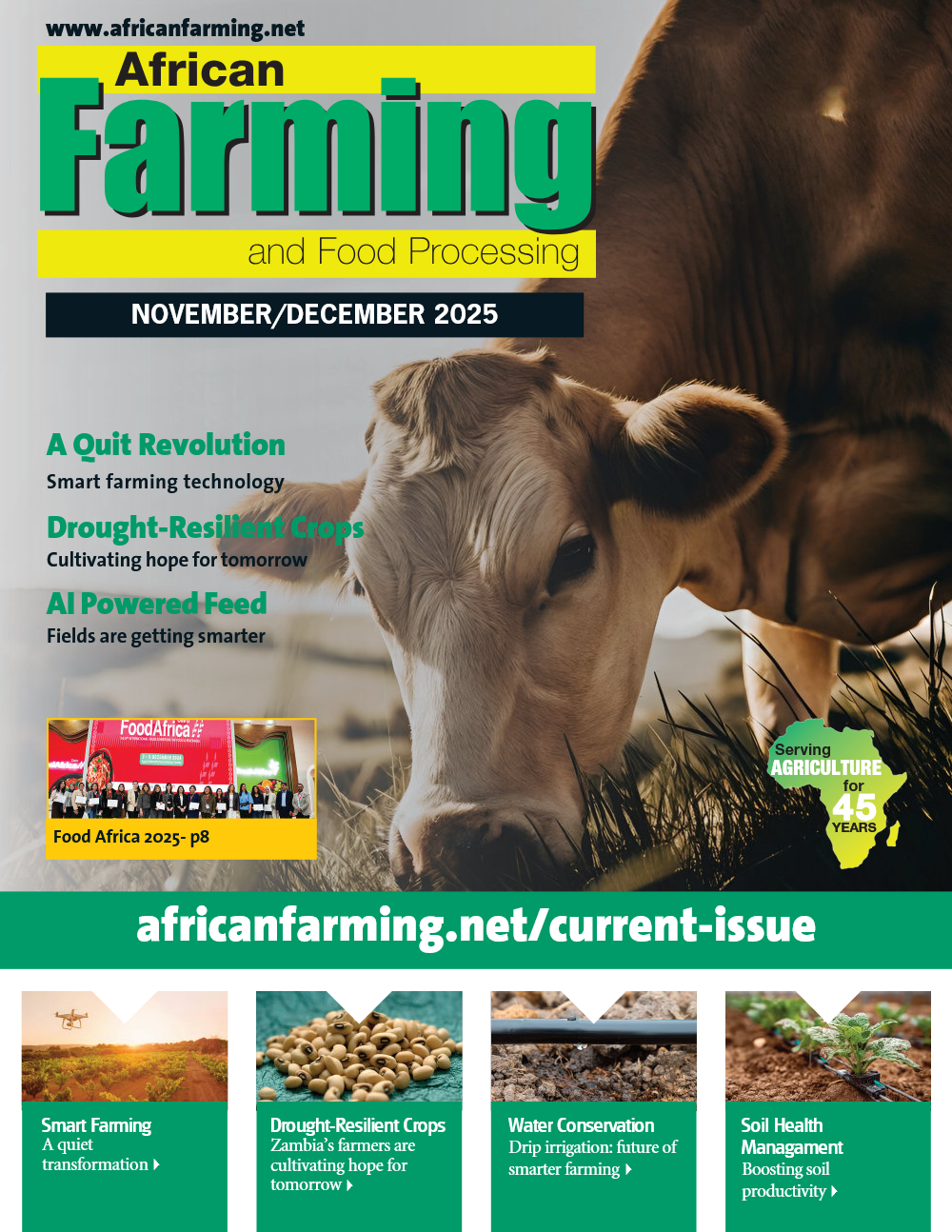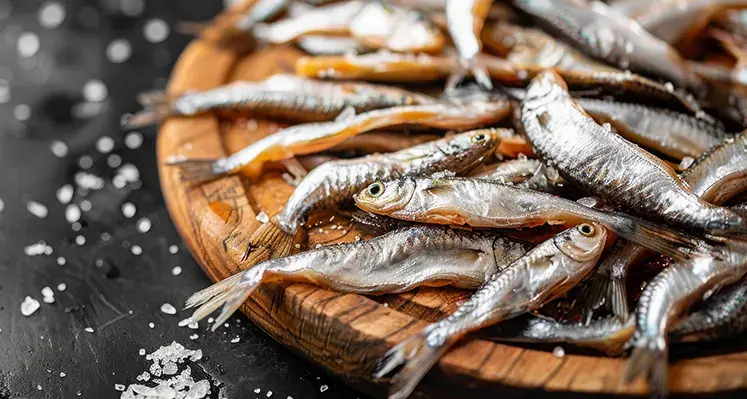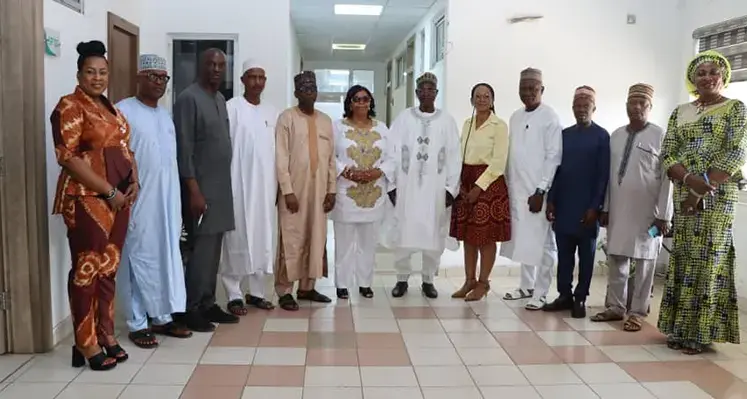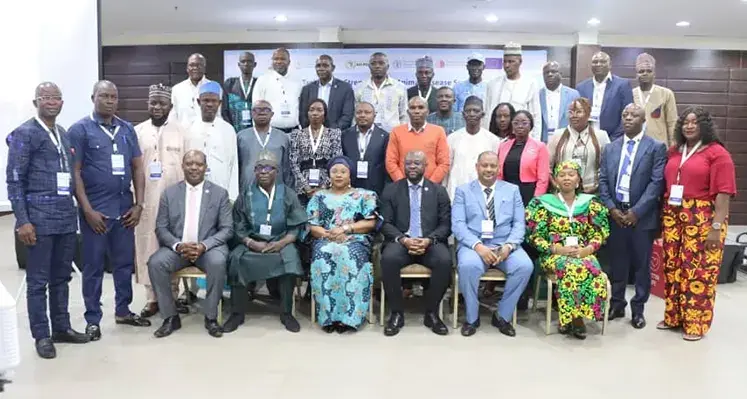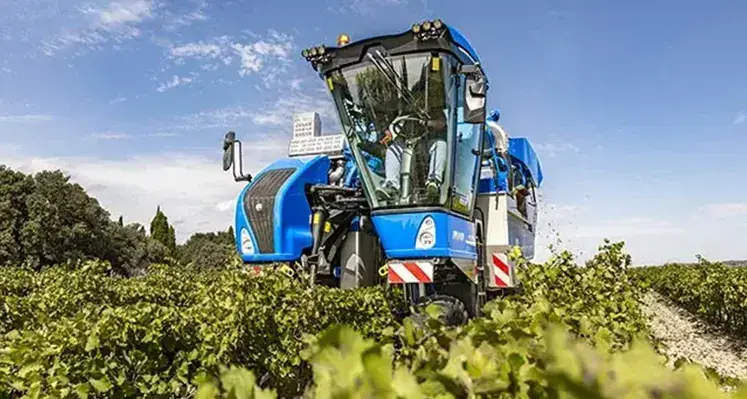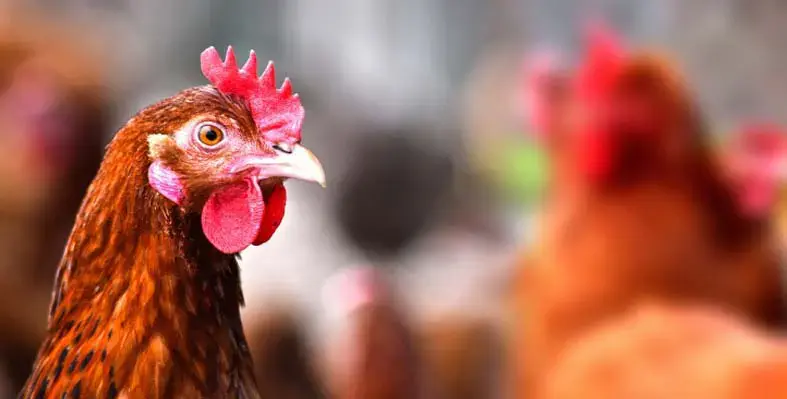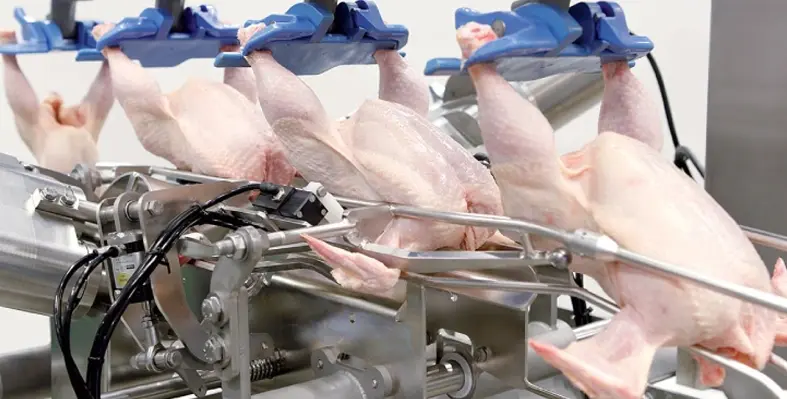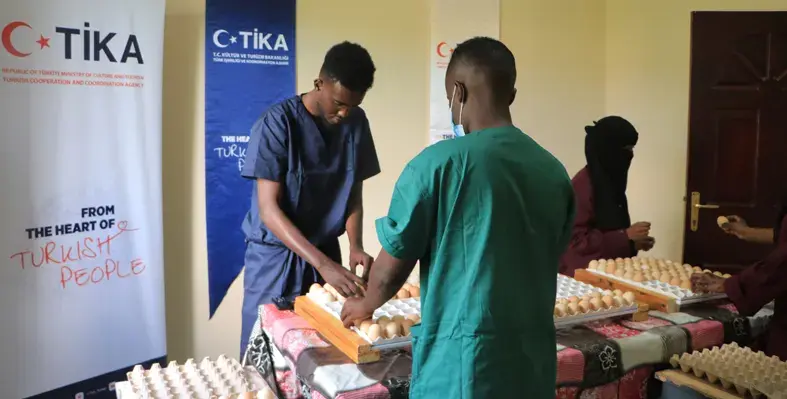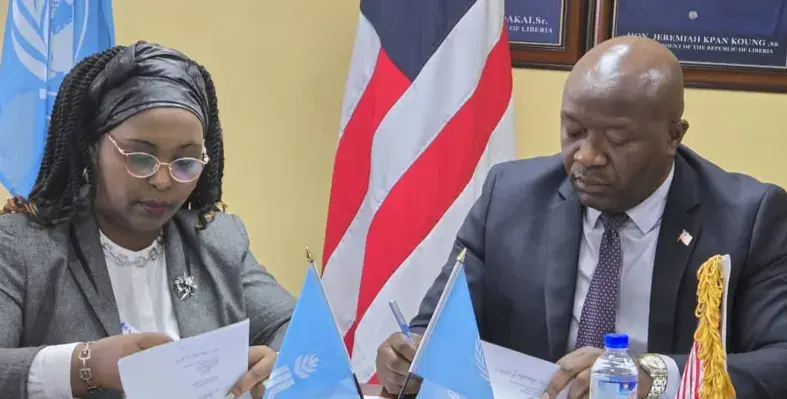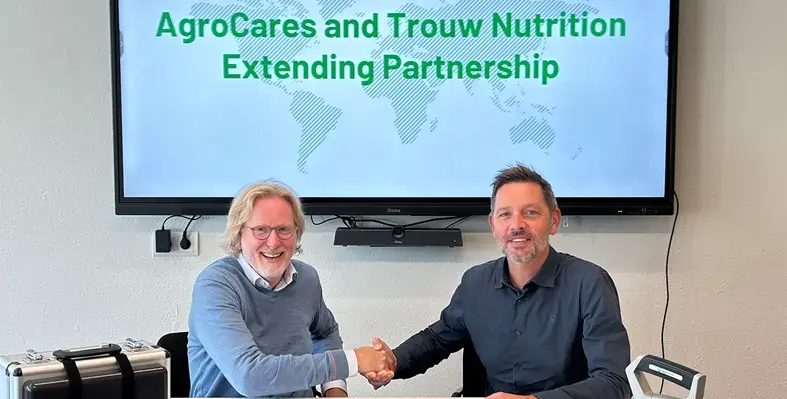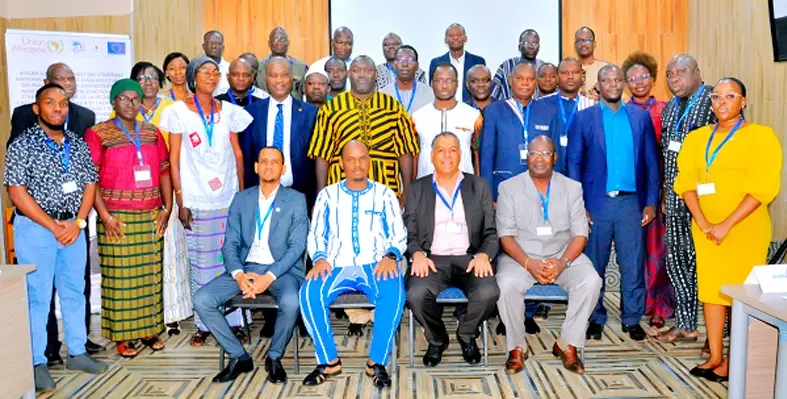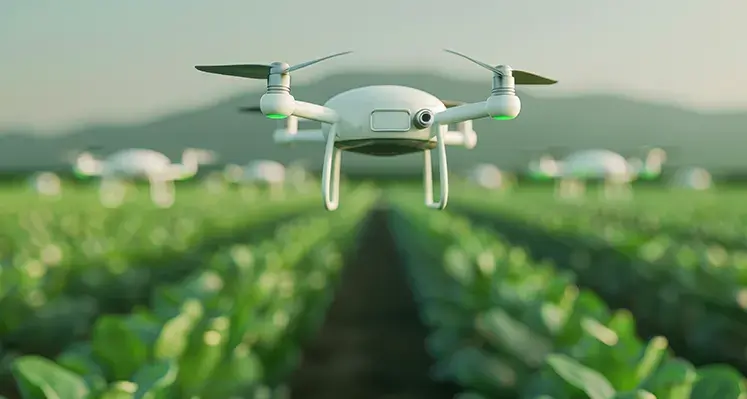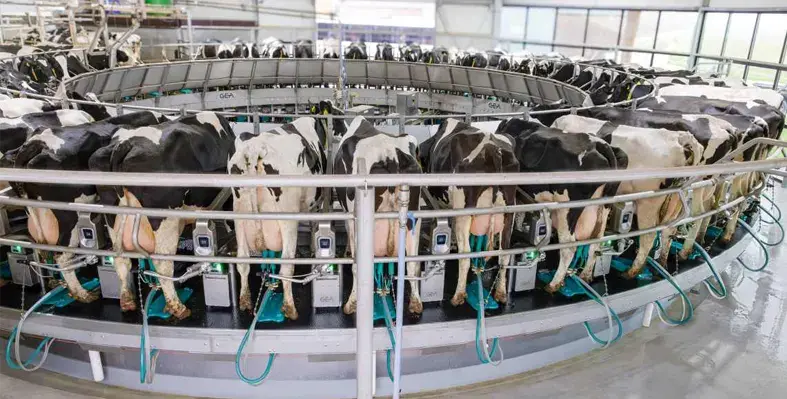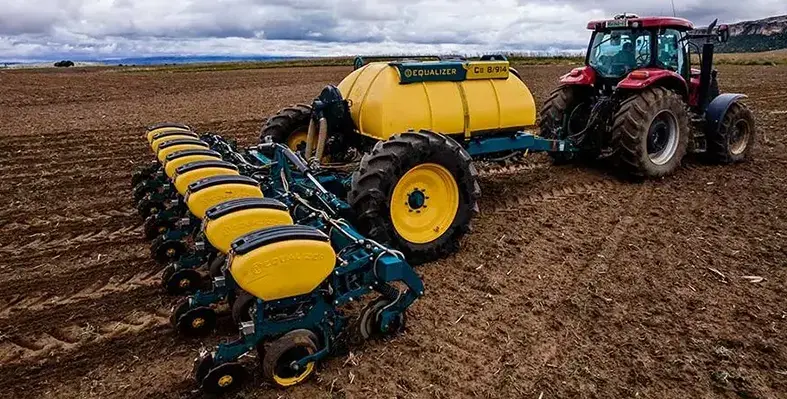In The Spotlight
The Food and Agriculture Organisation (FAO) of the United Nations has partnered with the Lagos State Ministry of Agriculture and Food Systems to drive strategic investment in Nigeria’s red meat and coconut value chains. This collaboration aims to strengthen the state’s agri-food sector, unlock economic opportunities, and create sustainable jobs, particularly for the youth.
During a roundtable meeting in Lagos on Tuesday, Hussein Gadain, FAO’s representative in Nigeria and ECOWAS, emphasised the strategic importance of Lagos in advancing Nigeria’s food security agenda. Represented at the meeting by FAO programme officer Tofiq Braimah, he praised the Lagos Ministry of Agriculture and Food Systems for demonstrating “bold leadership and unwavering commitment to building a sustainable agri-food system.”
“These value chains include coconut, livestock, and feedlot systems to attract private-sector and multilateral investments,” he said. “By leveraging Lagos’ industrial potential and commercial networks, we aim to unlock new economic opportunities, create decent jobs, and empower the vibrant youth population. This approach positions Lagos to fully exploit AfCFTA opportunities, making it a model for agricultural transformation across Africa.”
Represented by Rasheed Macaulay, director of veterinary services, the Lagos State Ministry of Agriculture and Food Systems reiterated its readiness to drive investment and scale up initiatives that support sustainable agriculture. Permanent Secretary Mr Audu highlighted that FAO’s collaboration reflects a commitment to move beyond policy dialogue to practical, investment-driven solutions for food systems transformation.
The two-day roundtable focused on validating key proposals under the Lagos State Red Meat Initiative and the Coconut Value Chain Programme. These proposals are informed by comprehensive technical and economic analyses conducted through FAO’s Technical Cooperation Project, which included feasibility studies for a Lagos State Cattle Feedlot Farm Estate, and the FAO–UNIDO-supported Coconut Value Chain Programme.
Both programmes have produced detailed investment notes and financial models aimed at mobilising resources and attracting private-sector participation. By leveraging these insights, Lagos is positioned to enhance livestock productivity, optimise coconut production, and integrate value chains with broader industrial and commercial networks.
The FAO–Lagos partnership marks a significant step in sustainable agricultural development, positioning the state as a regional leader in food systems transformation, value chain modernisation, and youth empowerment, while fostering resilience and competitiveness within Africa’s evolving agri-food landscape.
Swiss technology group Bühler has celebrated the 10th anniversary of its African Milling School (AMS) in Nairobi, Kenya, marking a major milestone in the development of skilled professionals for Africa’s food and feed industries.
The anniversary event, brought together more than 100 guests, including customers, alumni and industry partners, while also celebrating the graduation of 15 students from seven countries.
Since opening its doors in 2015, the African Milling School has trained more than 1,600 millers from over 30 countries across Africa, the Middle East and India. At a time when food systems face mounting pressure from climate change, supply chain disruptions and labour shortages, the role of skilled millers has become increasingly critical in safeguarding productivity, resilience and food security.
AMS was Bühler’s first dedicated training mill on the African continent, created in response to strong customer demand for qualified milling professionals. Nairobi was selected as a strategic location due to its accessibility, modern infrastructure and regional connectivity. Following four years of planning and construction and an investment of approximately CHF 5 million, Bühler established a state-of-the-art training centre that combines advanced facilities, practical learning and expert instruction.
The school’s education model is based on the Swiss dual-training system. Students spend five months working in their home countries and one intensive month at AMS, completing four modules over two years. Classroom-based learning in the mornings is paired with hands-on practical training in the afternoons, ensuring immediate application in real-world milling operations.
“When we started the African Milling School, our focus was on education that truly makes a difference: training millers to optimize productivity and maximize yield,” says Martin Schlauri, the first Head of African Milling School. “Skilled operators are the backbone of efficient plants, and through proper education, they can deliver tangible results for their companies and the communities they serve.”
Over the past decade, AMS has expanded well beyond traditional flour milling. Its curriculum now includes feed milling, coffee processing, grain handling, baking technology and plant-based proteins. Courses are delivered through on-site, online and hybrid formats, making learning more flexible and accessible.
Alumni consistently highlight the school’s impact. “The Apprentice Miller Program really opened my eyes to the full picture of the flour milling industry – from technology to grain science,” says Sulaiman Al Saqri of Oman Flour Mills. “It helped me improve how I operate and troubleshoot in the plant every day.”
Industry leaders echo this view. “The African Milling School is more than a training center – it’s an engine for industry excellence,” says Sharuq Sokwalla, Managing Director of Grain Industries Limited in Kenya.
For Bühler, the long-term vision is clear. “The African Milling School is more than an educational institution – it is a catalyst for transformation,” says Dario Grossmann, Head of Bühler’s Milling Academy. Through its growing global education network, Bühler continues to equip the next generation of milling professionals with the skills needed to shape the future of food.
Italy’s tractor manufacturer McCormick has officially entered Ethiopia’s agricultural machinery market, marking a significant step in the country’s push to modernise farming and reduce reliance on manual labour.
Agriculture remains the backbone of Ethiopia’s economy, contributing around 34% of national GDP, and the government is intensifying efforts to accelerate mechanisation and productivity growth.
McCormick Tractors, owned by Italian industrial group Argo Tractors, announced a strategic partnership with Ethiopia’s Kerchanshe Group. The conglomerate is a major player in agricultural production and commodity trading, making it a natural partner for the Italian manufacturer’s market entry.
Under the agreement, Kerchanshe Group becomes the exclusive distributor of McCormick tractors across Ethiopia. The partnership covers nationwide sales, after-sales support and technical services, giving McCormick a direct channel into one of East Africa’s fastest-growing agricultural markets. For Ethiopia, the deal brings greater access to modern farm equipment as the country seeks to transform smallholder-dominated agriculture.
A fast-growing mechanisation market
Ethiopia presents a high-growth opportunity for global farm machinery suppliers. Despite vast agricultural potential, mechanisation levels remain low, with manual labour still dominating rural production. Government data show that tractors currently cultivate only about 5 million hectares, equivalent to 27% of the country’s estimated 18.4 million hectares of arable land.
To close this gap, the Ministry of Agriculture has set ambitious targets under its ten-year development strategy. The plan aims to increase the national tractor fleet from 20,000 units to 65,000, while the number of combine harvesters is expected to rise sharply from 2,700 to 15,000 units. These goals underscore Ethiopia’s long-term commitment to agricultural modernisation.
Supportive fiscal policies are also fuelling demand. Since 2020, Ethiopia has allowed duty-free imports of agricultural machinery and related equipment, encouraging leasing services and making modern technology more accessible to farmers.
A competitive landscape for foreign manufacturers
McCormick enters an increasingly competitive market already attracting major international players. In June 2023, China’s YTO China-Africa Machinery Corp (Camaco) partnered with the state-owned Ethio-Engineering Group to establish a tractor assembly plant with an annual capacity of 10,000 units. A month later, Zoomlion Agriculture Machinery Co. signed an agreement with the Ethiopian Agricultural Business Corporation to supply equipment, distribute spare parts and provide training and maintenance services.
In August 2025, Japanese manufacturer Kubota also announced plans to accelerate its African expansion, including Ethiopia, with backing from Sumitomo Mitsui Banking Corporation.
Expanding McCormick’s African footprint
The Ethiopian entry significantly strengthens McCormick’s presence in Africa, which had previously been limited to South Africa. The move aligns with broader market trends, as analysts project the African farm machinery market to grow from US$3.20bn in 2025 to US$4.65bn by 2030. Rising mechanisation gaps, targeted subsidies, digital leasing platforms and climate-smart farming practices are making tractors an essential tool across Africa’s evolving agricultural landscape.
From 16 to 18 June 2026, Bernburg in Saxony-Anhalt will once again become the central hub for modern crop production as the DLG Feldtage returns to the fields of the International DLG Crop Production Centre.
Set on DLG’s expansive 600-hectare trial farm near Leipzig, the open-air event is gearing up to showcase practical farming innovations under the inspiring theme “Crop Production out of the Box”. With more than 150 exhibitors already registered, the organisers are still welcoming further participants via dlg-feldtage.de.
Recognised as the leading international field exhibition for crop professionals, DLG Feldtage brings together farmers, agronomists, machinery experts and researchers seeking hands-on insights into the future of crop production. This year’s programme spans everything from plant breeding and crop protection to fertilisation strategies and cutting-edge agricultural machinery. Visitors can look forward to a rich mix of demonstrations, expert knowledge and real-world trial plots, supported by popular formats including DLG Spotlights, Expert Stages and Pop-up Talks.
The thematic DLG Spotlights are set to be a major draw. The “Planting Green” Spotlight will delve into direct drilling into living cover crops, with live plots demonstrating soil-friendly techniques, nutrient efficiency and modern weed management approaches. Equally compelling is the “Value Chain for Quality Wheat” Spotlight, which traces how premium wheat quality is upheld from field to processing, illustrating the collaboration required across agriculture, trade and milling. Meanwhile, the “Organic Farming” Spotlight will highlight diverse rotations, robust crop choices and practical advice for organic growers looking to refine both production and marketing.
Across the site, visitors will find dedicated meeting zones for discussions on oil and protein crops, resilient cropping concepts and strategies for navigating weather-related risks. As always, machinery demonstrations are a core attraction. Across six themed areas from direct seeding and deep tillage to mechanical weed control 66 machine combinations will take to the field, each accompanied by expert commentary and presented once per day.
Following its successful debut in 2024, FarmRobotix returns with the latest robotics, automation tools and AI-driven innovations for crop production. A special demonstration area will spotlight autonomous field systems, offering a glimpse of how technology may redefine farming in the years ahead.
Beyond the plots and machines, the DLG Plaza will serve as the social and professional heart of the event, hosting expert talks, panel sessions, regional food and relaxed networking. Short and sharp Pop-up Talks will take place at exhibitor stands and Spotlight areas, covering timely topics such as fertilisation and crop protection. The popular DLG CropNight will also make its return, inviting attendees to unwind with live music, food and summer drinks. Camping facilities will be available for visitors wishing to stay on site.
For more information please visit www.dlg-feldtage.de
A major African Development Bank Group–funded programme is transforming fisheries management and boosting regional trade, improving the lives of nearly three million people across Southern Africa.
The Program for Improving Fisheries Governance and Blue Economy Trade Corridors (PROFISHBLUE) has revitalised aquatic resource management and expanded cross-border fish commerce, with trade volumes now exceeding 500,000 tonnes over the past four years. This progress is driving job creation, strengthening food security, and enhancing climate resilience across 16 Southern African Development Community (SADC) nations.
Backed by a $9.2 million ADF 15 grant, the initiative has delivered training, equipment, and technical support to more than 250,000 beneficiaries across seven African Development Fund countries: the Democratic Republic of Congo, Madagascar, Malawi, Mozambique, Tanzania, Zambia, and Zimbabwe. Capacity-building programmes have covered a wide range of areas, including fish value chain development, post-harvest utilisation, SME growth, genetic improvement of indigenous tilapia species, policy harmonisation, and nutrition-focused fish product development. Support has also extended to fish stock assessments in shared water bodies, vessel monitoring systems, and improved collection of catch statistics.
During World Fisheries Day on 21 November, SADC, the African Development Bank Group, and partner organisations gathered in Gaborone to highlight the programme’s achievements since its 2022 launch. The celebration showcased tangible improvements in regional fish value chains and stronger consumer markets linked to enhanced governance and blue economy investment.
Domingos Gove,Director speaking for SADC Deputy Secretary for Regional Integration Angele Makombo Ntumba, said: "We are indebted to the African Development Bank Group for providing funding to implement this project within the Blue Economy space. This support has demonstrated our capacity to improve aquatic food systems for the benefit of over 380 million people in the region."
Neeraj Vij,The African Development Bank’s Regional Sector Manager for Feed Africa Operations for Southern Africa,added: "The PROFISHBLUE project has shown best practices in regional integration of blue economy trade corridors and cross-border fish trade… This project demonstrates how strategic investment in fisheries governance can create competitive value chains that provide jobs and livelihoods while eradicating extreme poverty, especially in rural areas."
Key partners including FAO, UNIDO, WWF, WorldFish and ARSO have contributed crucial expertise. Regional leaders praised the programme’s role in providing a platform for shared learning, with testimonials from women in fisheries underscoring its inclusivity. One participant from Tanzania reflected: "We embarked on an investment journey that few smallholder entrepreneurs would consider piloting technology in seaweed farming. We appreciate the opportunity..."
Nasarawa State has officially commenced production of “NASACCO Gold Rice” through the Nasarawa State Agro Commodity Company (NASACCO), a move aimed at strengthening food security and promoting agricultural value addition in the region.
Governor Abdullahi Sule commissioned the initiative during an event in Lafia on Tuesday, emphasising its potential to enhance both state and national food stability.
The initiative is a collaborative effort with Silvex International, a leading rice-processing company in Nigeria. Governor Sule explained that Silvex has sourced rice paddy from state-owned farms located in Jangwa and Agwatashi communities within the Awe and Obi Local Government Areas. The harvested rice will be processed and branded as “NASACCO Gold Rice,” providing a distinctive, high-quality product for consumers.
“This will boost food security, attract investment, and implement strategies for sustainable agriculture,” Governor Sule stated, highlighting the broader economic and agricultural benefits of the programme. He also noted that the initiative aligns with the federal government’s Renewed Hope policy on agriculture, which promotes private sector participation, value addition, and inclusive growth.
Governor Sule further revealed that the NASACCO Gold Rice would be sold to the public at a 10 percent discount off the current market price for 50 kilograms, encouraging Nigerians to support the locally produced brand. He described the rice as “one of the best in the market,” urging citizens to patronise the product.
The governor expressed gratitude to Silvex International for partnering with the state to advance the project, noting that such collaborations are central to attracting private sector investment and boosting the local economy.
In his remarks, the Minister of Agriculture and Food Security, Abubakar Kyari, represented by Ibrahim Alkali, a director in the ministry, commended the initiative for its potential to promote economic growth, food security, and private sector involvement in the agricultural value chain.
The NASACCO Gold Rice project marks a significant milestone for Nasarawa State, positioning it as a model for sustainable rice production, agricultural innovation, and investment-friendly policies in Nigeria’s agri-food sector.
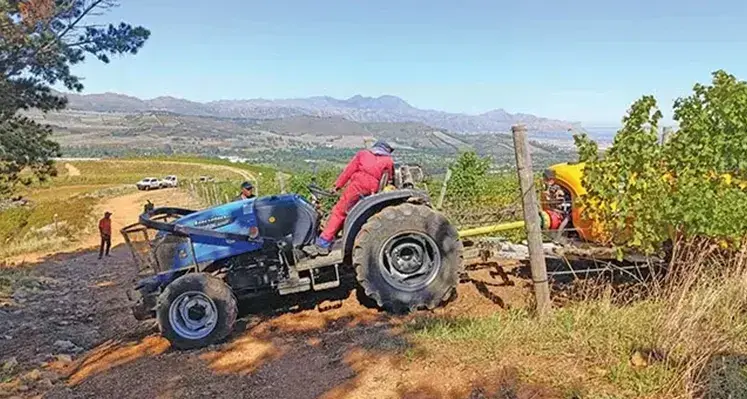
Vicar sprayers are proving to be a formidable investment for South African farmers striving for smarter. (Image credit: Vicar)
European spraying innovation has taken a bold leap into the South African agriculture sector with the arrival of Vicar mist blower sprayers, a technology reshaping the way growers manage crop protection.
Developed over 40 years ago by Italian engineer Vincenzo Caroli in collaboration with LTS in Germany, this advanced sprayer design has become synonymous with intelligent airflow, high efficiency, and exceptional coverage. Now imported by Ikapa Trading in Grabouw, Vicar sprayers are fast becoming a favourite among farmers seeking smarter, faster, and more precise spraying solutions.
What sets the Vicar system apart is its pioneering radial turbine technology, which independent consultant Mike Heath who has witnessed decades of machinery evolution believes to be a game-changer. Unlike conventional axial flow sprayers that rely on propeller blades and lose speed as air moves through housings and deflectors, Vicar sprayers use a single turbine resembling a water wheel. This turbine sucks air in from both sides and moves it radially at a 90° angle, producing a consistent, high-velocity air stream.
The uniquely designed cast aluminium housing forces air through calibrated outlets only, resulting in a uniform exit speed of 250km/h to 280km/h at 540 PTO. Crucially, this system achieves optimal spray delivery while requiring up to two to three times less air volume than axial flow designs dramatically improving efficiency.
Vicar sprayers are also fitted with 360° rotating spray heads, each equipped with up to eight nozzles that move with the airflow for precise application. Heath explains that this makes every model adaptable: vineyards, orchards, tree crops, flowers, vegetables and dense plantations can all be targeted with outstanding coverage. The Vicar 540 reaches 12m per side and 25m in height, while the Vicar 450 covers 4m per side and up to 15m high ideal for vineyards and orchards. The 456 model enhances multirow spraying for modern high-density crops.
Vicar’s airflow control technology also allows operators to manipulate spray direction and prevent turbulence. Upper outlets can create an “air ceiling” to keep spray low for young crops, while lower outlets deliver targeted protection. With reduced drift up to 90% less environmental pollution, as tested by the Julius Kühn-Institut—Vicar ranks among the few sprayers meeting Germany’s strict regulations.
Heath adds that the sprayers’ ability to work faster at high air speeds means farmers can double their operational pace compared with axial fan sprayers. “Being able to work faster and spray multiple rows is allowing Vicar clients to substitute at least two conventional sprayers with one Vicar sprayer,” he notes.
Built for stability, especially on hilly terrain, Vicar’s trailed models feature double-axle frames, three-point linkage attachment, adjustable wheels and a short-turn system that improves manoeuvrability. Tanks include clean-water reservoirs for easy flushing, reducing contamination risks and enhancing longevity.
Despite being pricier than traditional sprayers, co-owner Neels Thiart says the machines pay for themselves quickly thanks to superior performance and durability. In Europe, their second-hand value remains exceptionally high: “In Europe you are able to sell one of these sprayers second-hand for almost the same price as you bought it,” he says.
With unmatched penetration, reduced drift, precision airflow and long-term value, Vicar sprayers are proving to be a formidable investment for South African farmers striving for smarter, more sustainable crop protection.







